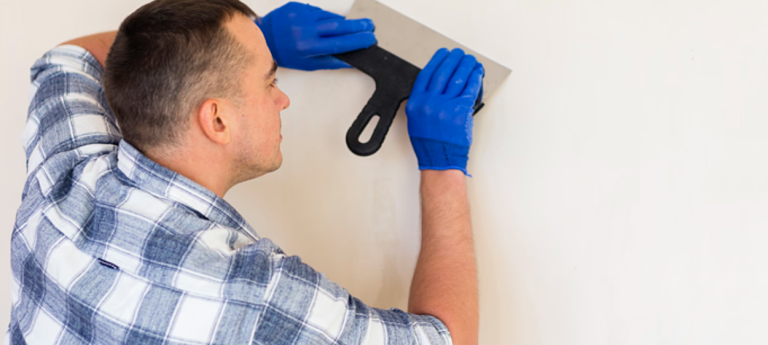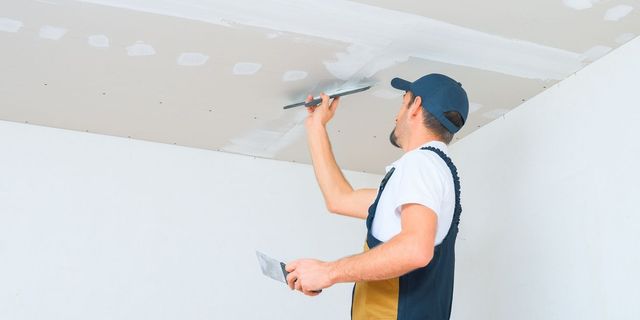Discover the Finest Practices for Successful Drywall Fixing and Installation
The art of drywall repair and installment requires a mix of skill and accuracy. Mastering the essential devices is vital for achieving a seamless coating. Comprehending the detailed process can make a substantial distinction in the outcome. Proper methods for mudding and taping are likewise crucial. What continues to be is the understanding of upkeep that ensures long life. These elements with each other create a sleek outcome worth exploring better.

Essential Tools for Drywall Repair Work and Installment
When undertaking drywall repair and installation, having the right tools can substantially boost the efficiency and quality of the job. An energy knife is important for reducing drywall sheets exactly, while a drywall saw can aid in making much more detailed cuts. Taping blades, offered in numerous sizes, are crucial for using joint compound efficiently and equally. A drywall sander, ideally with a dust collection attribute, helps accomplish a sleek finish, decreasing the demand for extensive clean-up.
In addition, a measuring tape assurances accurate dimensions, and a degree makes certain that installations are straight and plumb. Security equipment, consisting of dust masks and safety glasses, need to not be overlooked to secure against particles and dust. Finally, a stud finder help in locating mounting members, ensuring protected installation. By furnishing oneself with these essential tools, the repair and setup procedure comes to be much more workable and causes a professional-quality outcome.

Step-by-Step Guide to Patching Holes
Patching holes in drywall needs a systematic technique to assure a seamless repair work. The location around the opening need to be cleaned up and any type of loosened particles eliminated. For small openings, a putty blade can be utilized to apply a light-weight spackle, pressing it right into the opening and smoothing the surface. After it dries out, sanding is essential to produce a flat surface. For bigger holes, a spot of drywall may be needed. This involves reducing an item of drywall a little bigger than the hole, safeguarding it to the wall with screws, and making use of joint compound to cover the seams. Once the substance dries, it ought to be fined sand smooth. Finally, topping the patched area before painting will certainly guarantee an even coating. Complying with these actions will lead to a professional-looking repair that mixes flawlessly with the surrounding wall.
Techniques for Smooth Drywall Setup
Accomplishing smooth drywall installment demands cautious preparation and execution. First, it is necessary to cut and determine drywall sheets accurately to minimize gaps. Utilizing an utility blade, installers must score the board prior to breaking it along the cut line, ensuring clean sides. Correctly straightening the sheets is important; beginning from the leading and working down assists preserve harmony.
Securing drywall to the studs needs constant spacing, commonly every 16 inches, making use of screws as opposed to nails for much better hold. This method lowers the risk of stands out with time. In addition, startling the joints in between sheets improves structural honesty and lowers the presence of joints.
Ultimately, utilizing the ideal thickness of drywall for particular locations-- such as moisture-resistant enters shower rooms-- additional contributes to a flawless finish. Complying with these techniques will certainly cause a professional-looking and smooth installation, establishing the stage for the succeeding finishing procedures.
Completing Touches: Taping and Mudding
Ending up touches, such as mudding and taping, play a necessary role in achieving a sleek drywall surface. Insulation includes applying a thin strip of drywall tape over the joints and joints, guaranteeing a smooth look. This procedure assists avoid fractures and produces a strong bond between drywall sheets. It is essential to choose the right kind of tape, with paper and fiberglass harmonize being the most typical options.
Mudding, or applying joint substance, follows insulation. This substance fills up in spaces and smooths out the surface for an uniform coating. It is commonly used in several layers, with each coat requiring to completely dry before fining sand. Appropriate technique entails feathering the edges to blend the substance into the bordering drywall, lessening exposure.
When finished correctly, taping and mudding boost both the architectural and visual honesty of the drywall installation, resulting in a professional-quality finish.
Tips for Preserving Your Drywall After Setup

Additionally, keeping a consistent interior moisture degree can stop bending or mold development. Using home a dehumidifier in moist locations, like basements, is recommended. It's likewise valuable to periodically paint areas that show wear, as this safeguards the underlying material. Lastly, when relocating furniture or setting up components, care should be exercised to stay clear of harming the drywall. By adhering to these maintenance ideas, house owners can prolong the life of their drywall, safeguarding it stays an eye-catching function of their insides.
Frequently Asked Concerns
What Safety And Security Gear Is Essential for Drywall Repair and Setup?
For drywall repair service and setup, crucial safety gear includes safety goggles to safeguard eyes, dust masks to stop inhalation of bits, gloves for hand protection, and knee pads for comfort during prolonged kneeling. drywall contractors.
How Do I Figure Out the Drywall Thickness Needed for My Project?
To figure out the drywall density needed for a job, one must take into consideration the wall's structural requirements, local building codes, and the intended usage of the area, commonly selecting 1/2-inch or 5/8-inch drywall.
Can I Repair Drywall Without Removing Furniture From the Room?
Yes, drywall can be fixed without getting rid of furniture from the room. Careful preparation and safety procedures can lessen mess, enabling for effective repairs while keeping surrounding products safe from dust and damages throughout the process.
What Types of Drywall Are Finest for Various Settings?
Moisture-resistant drywall is ideal for bathrooms and kitchens, while soundproof drywall matches shared about his wall surfaces in homes. Fire-rated drywall is best for garages, and typical drywall functions well in general living areas, ensuring resilience and suitability for various environments.
For how long Does It Consider Drywall Mud to Dry Completely?
Drywall mud typically takes 24 to 2 days to dry entirely, depending on aspects like humidity and temperature level (drywall contractors). Thicker applications might need longer drying out times, while thinner layers can dry out faster. Proper air flow aids drying out
The art of drywall repair service and installation needs a blend of ability and precision. When taking on drywall repair service and installation, having the right devices can greatly boost the effectiveness and top quality of the work. An energy knife is essential for cutting drywall sheets specifically, while a drywall saw can assist in making more complex cuts. Achieving seamless drywall setup needs careful planning and execution. Moisture-resistant drywall is excellent for shower rooms and kitchens, while soundproof drywall matches shared wall surfaces in houses.